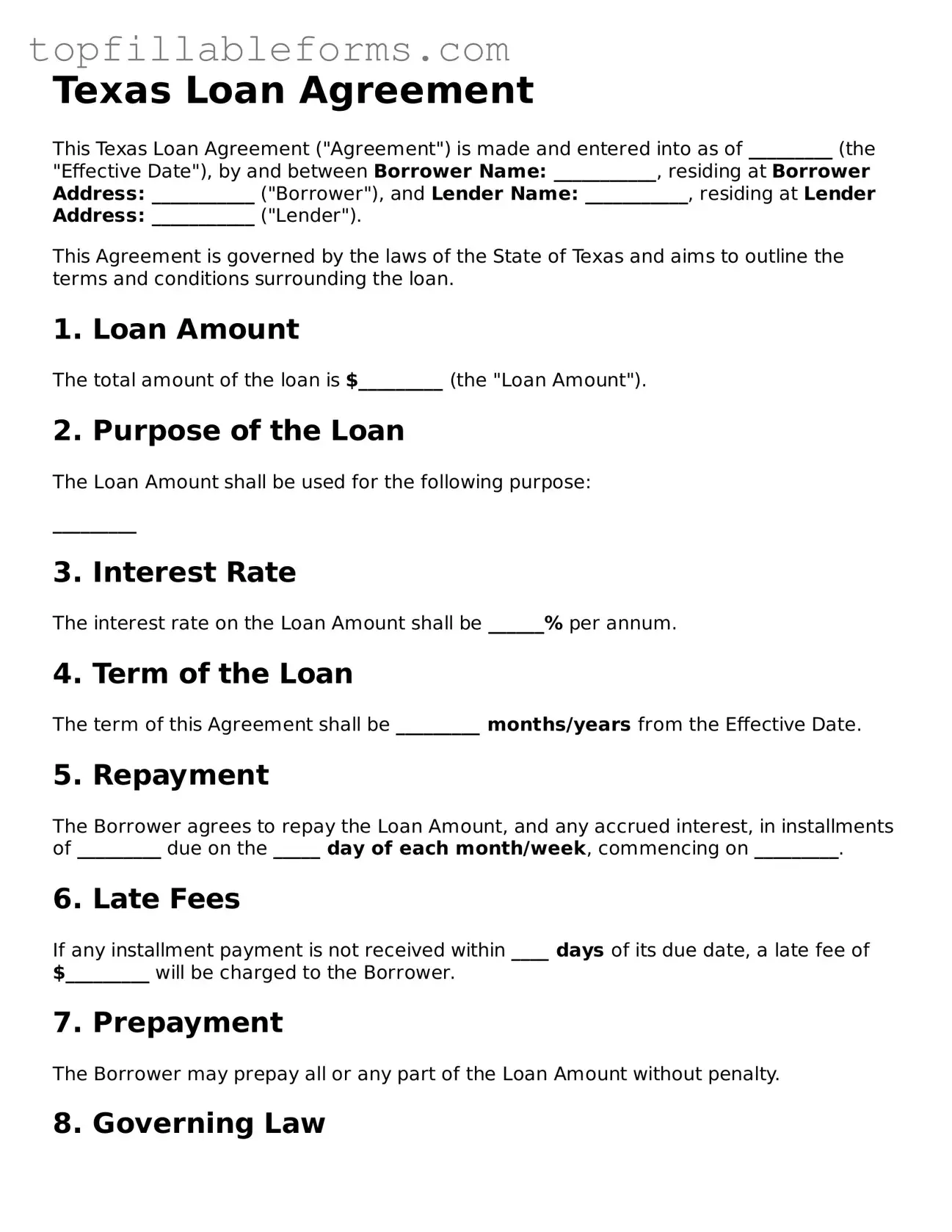Texas Loan Agreement
This Texas Loan Agreement ("Agreement") is made and entered into as of _________ (the "Effective Date"), by and between Borrower Name: ___________, residing at Borrower Address: ___________ ("Borrower"), and Lender Name: ___________, residing at Lender Address: ___________ ("Lender").
This Agreement is governed by the laws of the State of Texas and aims to outline the terms and conditions surrounding the loan.
1. Loan Amount
The total amount of the loan is $_________ (the "Loan Amount").
2. Purpose of the Loan
The Loan Amount shall be used for the following purpose:
_________
3. Interest Rate
The interest rate on the Loan Amount shall be ______% per annum.
4. Term of the Loan
The term of this Agreement shall be _________ months/years from the Effective Date.
5. Repayment
The Borrower agrees to repay the Loan Amount, and any accrued interest, in installments of _________ due on the _____ day of each month/week, commencing on _________.
6. Late Fees
If any installment payment is not received within ____ days of its due date, a late fee of $_________ will be charged to the Borrower.
7. Prepayment
The Borrower may prepay all or any part of the Loan Amount without penalty.
8. Governing Law
This Agreement shall be governed by and construed in accordance with the laws of the State of Texas.
9. Entire Agreement
This Agreement constitutes the entire understanding between the parties and supersedes all prior agreements related to the subject matter herein.
10. Signatures
IN WITNESS WHEREOF, the parties hereby execute this Texas Loan Agreement as of the Effective Date.
- Borrower Signature: ___________________________
- Date: ___________________________
- Lender Signature: ___________________________
- Date: ___________________________
